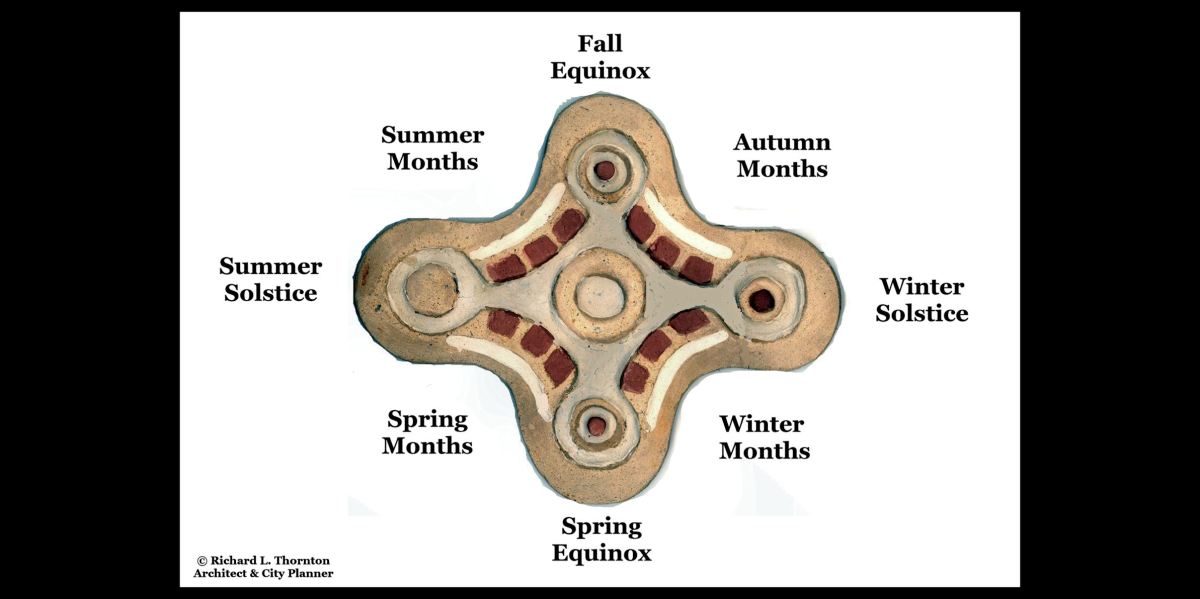It was developed independently in what is now the State of Georgia, USA in ancient times. It is unlike any other calendar in the Americas, Europe or Asia. Yet, it was equally as accurate as the Gregorian calendar, used throughout the world today.
by Richard L. Thornton, Architect & City Planner
Three 10-day weeks in a month
Twelve 30-day months
Five-to-six “leap” days prior to the Summer Solstice
Lunar calendar also maintained to determine dates of minor festivals.
The calendar was calibrated annually by astronomer priests, known as Keepers of the Day, to determine the number of leap days necessary to keep the calendar accurate.
The circle at the center of the calendar symbolizes a solar eclipse, but probably was a slot to hold a wooden or bone dial, which denoted the time of the year. What you see is approximately a 100% scale photo of a ceramic calendar. Priests probably utilized much larger wooden calendars, in which each day could be denoted.
The symbols for the four phases of the sun are straight from a writing system, used in southern Sweden and Denmark during the Copper and Bronze Ages. I am able to translate most petroglyphs in this portion of the Georgia Gold Belt with a chart from Lund University’s Department of Archaeology and Ancient History, which is located near where I lived in Sweden. I must emphasize, though, that this calendar is different and superior to any calendar used in Scandinavia during ancient times.
Petroglyphs in the Etowah River Basin of North Georgia are composed of symbols, which first appeared in Galicia (northwestern Iberian Peninsula) then carried to Ireland, Scotland and Britain by Iberian immigrants during the Bronze Age.
Origins of the writing system
The Creek writing system, used at the time that Savannah, GA was settled in 1733, was a composite of several writing systems from Europe and the Americas. They were:
- A very ancient pictographic system first seen in southern Ukraine and the Balkans in Neolithic times. The Judaculla Stone petroglyphs are mostly from this system.
- A pictographic writing system on the Gulf Coast of Mexico, which predated the Maya writing system and was very different from it. The majority of writing symbols in the Creek writing system were from this Gulf Coast writing system.
- Sweden’s earliest writing system first appeared on boulders near Nykōping, Sweden around 2000 BC. It is quite different and much older than the Nordic Bronze Age writing system. All of the symbols on the Track Rock Gap, Georgia petroglyphic boulders can also be found near Nykōping, Sweden. The earliest Maya writing and number symbols are also identical to the Nykōping symbols.
- The Nordic Bronze Age writing system
- The Iberian-Gaelic Neolithic-Bronze Age writing system.
